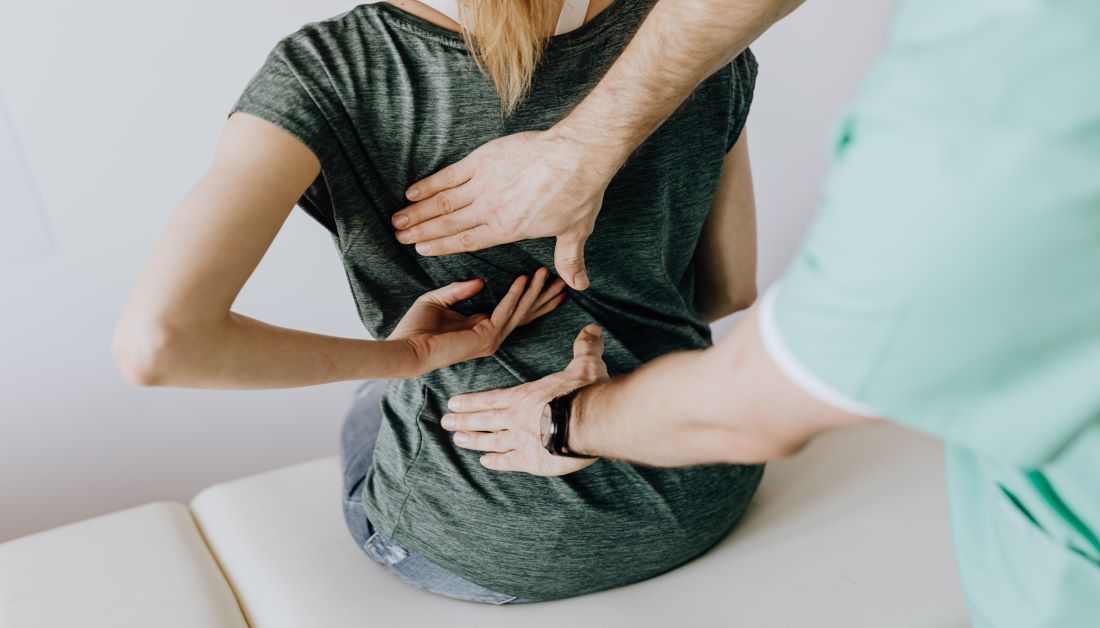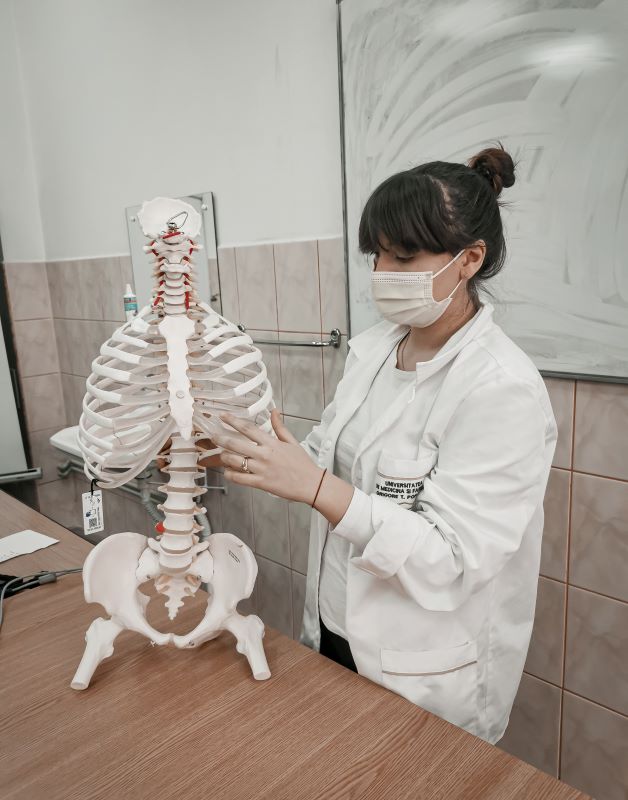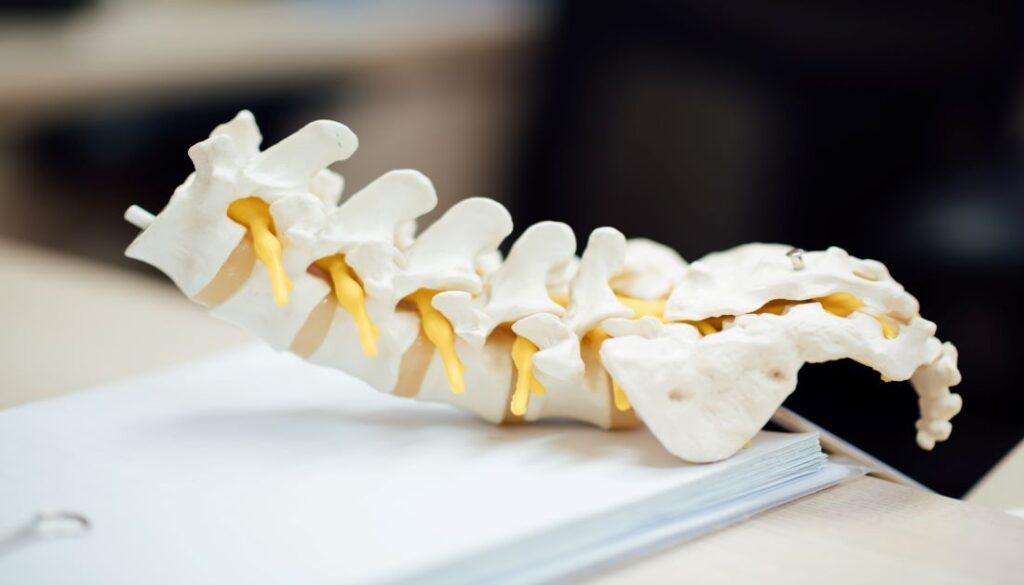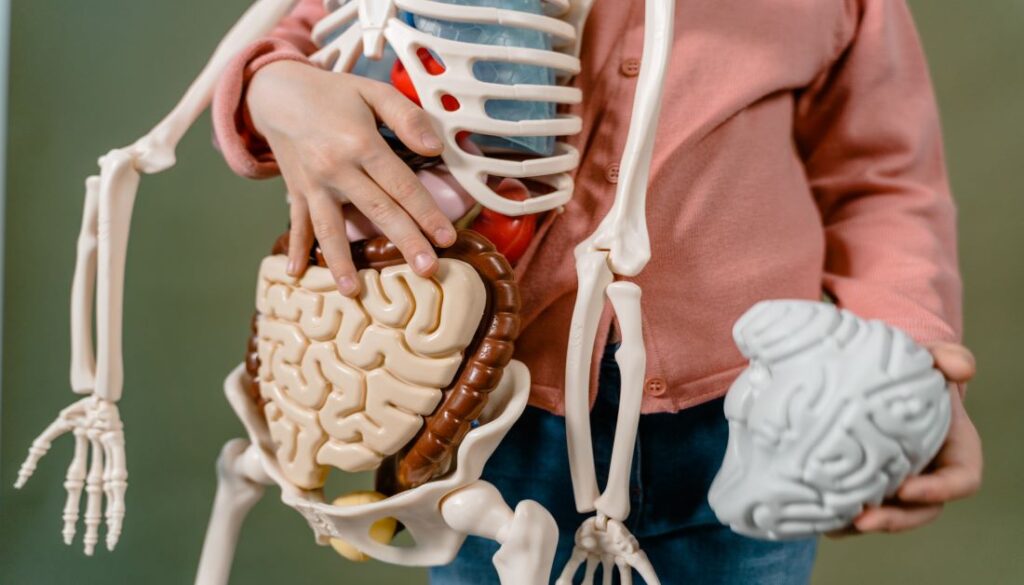Low back pain: Structures of the back leading to low back pain

Low back pain is one of the most prevalent causes of significant morbidity and disability worldwide.
In 60-70% of people, it is mild which recovers with conservative management at home. In rest of the people, it either progresses to a chronic condition or results from a serious underlying pathology requiring urgent medical attention.
Chronic low back pain disables a person the most and could lead to major health costs. Here, disabling a person means that it could affect all aspects of functioning i.e physical, psychological, social, vocational, role and recreational domains of a persons’ life.
To prevent it from disabling you, it is important to understand it.
Structures of the back leading to low back pain
To know the causes of low back pain, it is important to understand the structure of the back or the anatomy in a simple way.
Bony structures of the spine
The back comprises of bony structure of the spine with its muscular attachments, along with the ribcage at the level of chest, and pelvic bones at the lower end.
The bony elements of spine comprise of vertebrae which are 33 in number. They are divided into four parts i.e the cervical or neck (7 in number); thoracic or upper back (12 in number); lumbar or lower back (5 in number); sacral or at the pelvic level posteriorly (5 in number fused with each other); and coccyx (3-5 in number, commonly 4 and fused/semi fused).
Each vertebra has several parts i.e vertebral body anteriorly and the posterior elements posteriorly. The pedicle connects the anterior and posterior parts. The posterior elements comprise of the lamina, facet joints (between superior and inferior articular process), two transverse processes and one spinous process.
There are some variations in the upper two cervical vertebrae, and the sacral and coccygeal vertebrae. There is a hollow space in the center, between the vertebral body and the posterior elements. This space continues from top to bottom till the sacrum. The spinal cord is placed in this hollow, and the nerves which originate from the cord come out through various openings in the vertebrae.

Soft tissue structures of the spine
There are various ligaments and muscles for supporting the spine and maintaining a correct posture. The muscles which support are the deep and superficial abdominal muscles, small segmental muscles at the level of each vertebra, deep and superficial muscles of the back (i.e back extensor muscles), and large muscles at sides of the back.
The vertebrae are attached to the ribcage above with costovertebral joints and to the pelvis below with sacroiliac joints at both sides of the gluteal crease. The ribcage is attached to the central breastbone or sternum with the costosternal joints.
The vertebrae are connected with each other with soft structures known as intervertebral discs. These discs have two parts, the internal gelatinous nucleus and the outer ring of collagen fibers known as annulus. Apart from these discs, the vertebrae are also connected by facet joints on both sides of the vertebral column.
There are many ligaments and muscles attached to the ribcage and pelvic bones. These have the function of stabilization and movement of the spine, upper and lower limbs. The rib cage muscles aid in respiration and the pelvic muscles support the internal pelvic organs. The pelvic muscles are also connected with the hip joint, with a few of them extending till and below the knee joint.
The shape of the vertebral bodies and orientation of joints give a structure to the spine in which it is curved anteriorly at the cervical and lumbar levels and posteriorly at the thoracic and sacral levels.
Spinal cord, nerves and vessels
The spinal cord starts from the brainstem inside the skull and enters the spinal canal well protected by the bony vertebrae. It continues down and ends at the second lumbar level or L2 vertebrae. Beneath this, there is a bunch of nerves known as cauda equina which ends at the level of second sacral level or S2 vertebrae.
Nerves at each level exit from the intervertebral foramen on both sides of the spinal cord and supply each part of the body (i.e upper limb, trunk, pelvis and lower limb). They supply either singly or after joining with multiple nerves forming a plexus for supplying the upper and lower limbs as well as parts of the trunk.

There are blood vessels in the spine, both spinal veins and arteries with their branches supplying each level of the vertebrae and spinal cord.
The spinal cord is covered by three layers of membranes (meninges) which are the pia mater (innermost), arachnoid mater (middle), and dura mater (outermost). There is fluid along with veins, arteries and nerves in between the pia and arachnoid mater i.e in the intrathecal space or subarachnoid space, extending till the second sacral or S2 level. The fluid (CSF) baths, cushions, nourishes and protects the spinal cord. The space outer to the dura mater (epidural space) contains fat, connective tissue, venous plexus, arteries and spinal nerve roots. It is the site for various injection procedures required in pain management.
Low back pain could be associated with radiation to the leg or referred pain to adjacent parts of the trunk, to the pelvis, hip and knee.
Considering these, there would be different reasons for back pain, with some overlap.
The cause could emerge through conditions involving the
Skin;
Muscles;
Ligaments;
Fascial covering of the muscles;
Intervertebral discs; joints of the vertebrae;
Nerves, vessels, bony parts of the spine;
Bones, muscles, ligaments and joints of the ribcage, pelvis and lower limbs;
Vessels of the lower limb; the brain and the mind.
Pain could also be referred to the back from some internal organs (Pancreas, aorta and surrounding structures, kidney, ureter, uterus, ovaries, prostate ).
Once the structures causing the pain are well known, it becomes easy to proceed towards understanding the various causes of pain.
Once the cause is well understood, the management of low back pain becomes very easy for everyone!

